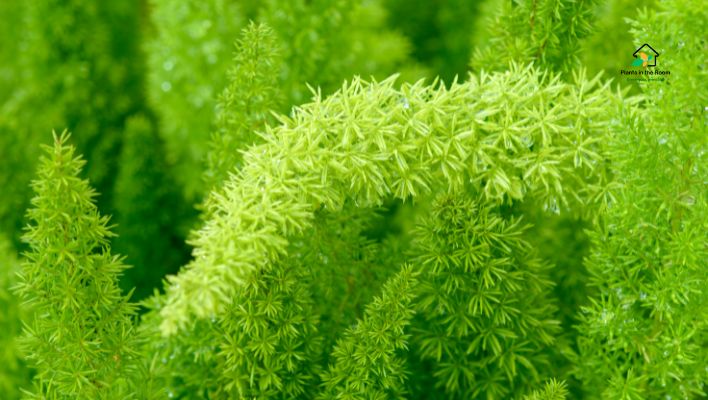This article covers the following areas –
- Creating Ideal Environment for Your Asparagus Fern
- Choosing the Ideal Pot & Potting Mix for Your Asparagus Fern
- Proper Watering and Fertilizing Practices for Your Asparagus Fern
- How to Prune & Repot Your Asparagus Fern for Optimal Growth
- Protecting Your Asparagus Fern from Pests: Control and Prevention Tips
- Troubleshooting Common Issues with Asparagus Ferns: Tips for Success
- In Conclusion
- Get to Know Your Asparagus Fern
Are you a fan of the delicate and feathery asparagus fern? You’re not alone! These low-maintenance beauties are popular for their unique appearance and ability to add a touch of greenery to any space.
Although they’re relatively easy to care for, it’s essential to know the best practices to keep your asparagus fern healthy and happy. In this post, I’ll share about all the aspects of asparagus fern care.
Provide bright indirect light, maintain room temperature and moderate humidity, use a well-draining potting mix, water and fertilize regularly, prune and repot as needed, and monitor for pests or common issues to keep your plant healthy and thriving.
Now, let me share some valuable tips to ensure that your asparagus fern gets the proper care to grow.
Creating Ideal Environment for Your Asparagus Fern

To ensure your asparagus fern thrives, it’s crucial to provide it with the perfect environment. By focusing on three key factors – bright, indirect light, comfortable room temperature, and proper humidity levels – you can create a nurturing space for your fern to grow and flourish.
Importance of Bright, Indirect Light
Asparagus ferns thrive in bright, indirect light. To find the perfect spot, place your plant close to a window but away from harsh, direct sunlight. This ensures it gets enough light without damaging its delicate leaves. When leaves receive too much sun, they can scorch, turn yellow, and become unhealthy.
Ideal Room Temperature
These beautiful ferns enjoy a comfortable room temperature similar to what we prefer. During the day, keep your asparagus fern in a space where the temperature ranges between 65-75°F (18-24°C). At night, make sure it doesn’t drop below 50°F (10°C). Sudden temperature changes can stress your fern, so keep it away from drafty areas like open windows or doors.
Humidity Requirements
Asparagus ferns appreciate a moderate humidity level of around 40-50%. To maintain this level of humidity, you can use a humidifier in the room where the plant is located. Another option is to regularly mist your fern with water, which helps keep its leaves moist and healthy.
Lastly, you can place your fern on a tray filled with pebbles and water. As the water evaporates, it creates a humid environment around the plant. Just make sure the pot doesn’t sit in the water, as this can lead to overwatering and root rot.
Choosing the Ideal Pot & Potting Mix for Your Asparagus Fern
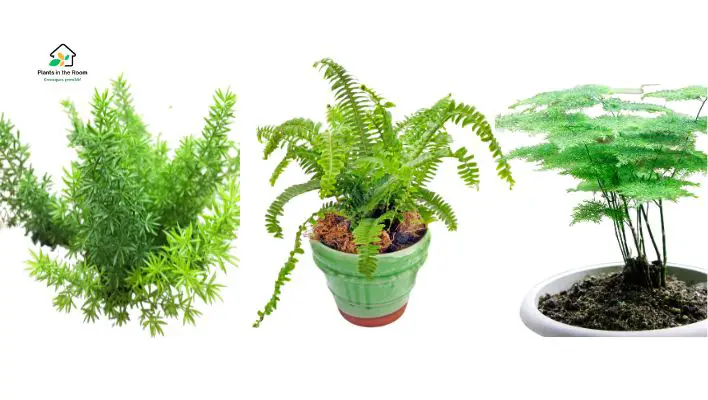
To set your asparagus fern up for success, selecting the right pot and potting mix is essential. The right combination will not only encourage healthy growth but also prevent common issues such as overwatering and root rot.
Selecting the Appropriate Pot Size and Type
When choosing a pot for your asparagus fern, make sure it has drainage holes and is 2-3 inches larger in diameter than the plant’s root ball. This extra space allows the roots to expand and grow, while also preventing waterlogging, which can lead to root rot. Both plastic and ceramic pots work well, as long as they provide adequate drainage.
Importance of Drainage Holes
Drainage holes are essential for maintaining the health of your asparagus fern. They allow excess water to escape, preventing overwatering and the risk of root rot. To keep the soil from escaping through these holes, cover them with a piece of screen or mesh. This allows water to flow freely while keeping the potting mix in place.
Creating the Perfect Potting Mix
A well-draining potting mix is vital for the well-being of your asparagus fern. To create the ideal mix, combine equal parts peat moss, perlite, and regular potting soil. This combination ensures proper drainage and provides the necessary nutrients for your fern to thrive. The peat moss helps retain moisture, while the perlite improves drainage and aeration, and the potting soil delivers essential nutrients.
Proper Watering and Fertilizing Practices for Your Asparagus Fern
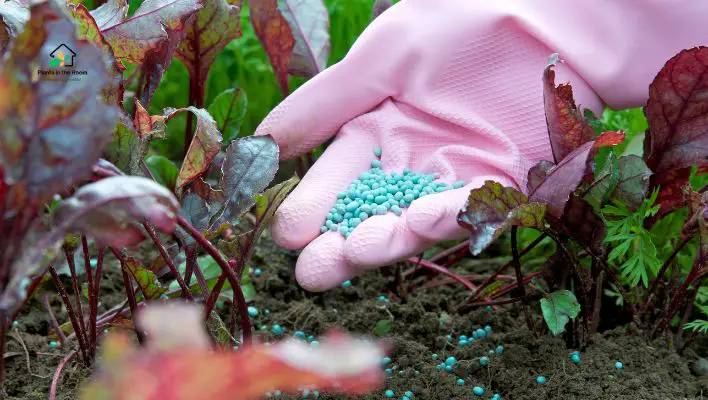
One of the key aspects of asparagus fern care is striking the right balance with watering and fertilizing. By learning how to check soil moisture, using proper watering techniques, and understanding the best fertilizing practices, you’ll be able to provide your fern with the nutrients and hydration it needs to grow strong and healthy.
How to Check Soil Moisture
Monitoring the moisture level of your asparagus fern’s soil is crucial to avoid overwatering or underwatering. To check the soil moisture, simply stick your finger about an inch deep into the soil. If the soil feels dry to the touch, it’s time to water your fern. If it feels damp, wait a day or two before checking again to avoid overwatering.
Proper Watering Techniques
When watering your asparagus fern, ensure that water flows through the drainage holes at the bottom of the pot. This guarantees that the roots are sufficiently hydrated. After watering, empty any excess water from the saucer to prevent the plant from sitting in standing water, which can lead to root rot. Remember to adjust your watering schedule depending on the season and the humidity levels in your home.
Fertilizing Frequency and Types
To promote healthy growth, feed your asparagus fern with a balanced liquid fertilizer diluted to half strength. During the growing season (spring and summer), fertilize your fern every four weeks. In the fall and winter months, when growth slows down, reduce the fertilizing frequency to once every two months. This schedule provides your fern with the necessary nutrients for optimal growth without overloading it.
How to Prune & Repot Your Asparagus Fern for Optimal Growth
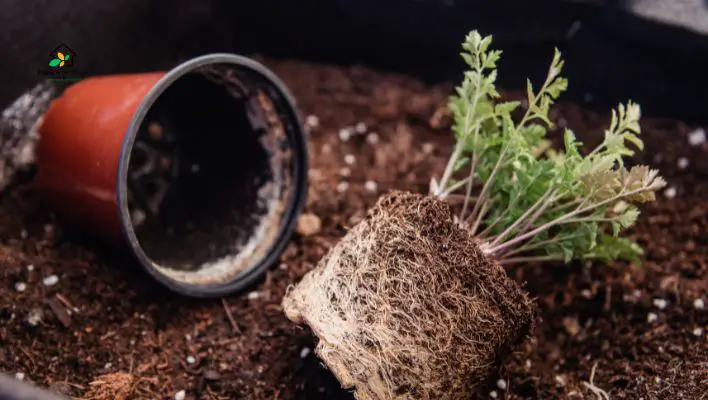
As your asparagus fern grows, regular pruning and occasional repotting will be necessary to keep it healthy and vibrant. Pruning helps maintain the plant’s shape, encourages new growth, and removes any unhealthy foliage. Repotting gives the plant more room to grow and prevents it from becoming root-bound. In this section, we’ll guide you through the process of pruning and repotting your asparagus fern, covering the best techniques and essential tips for success.
When and How to Prune Asparagus Ferns
To keep your asparagus fern looking its best, regularly prune dead, yellowing, or overcrowded fronds. This not only maintains the plant’s appearance but also encourages new, healthy growth. Use clean, sharp scissors or pruning shears to trim the affected areas, taking care not to damage the healthy foliage.
Signs Your Fern Needs Repotting
There are a few indicators that it’s time to repot your asparagus fern. If you notice roots poking out of the drainage holes or the plant looks cramped in its current pot, it’s likely time for a larger container. Choose a new pot that’s 2-3 inches larger in diameter to give your fern ample space to grow.
Repotting Steps and Tips
When repotting your asparagus fern, follow these simple steps for a smooth process:
- Carefully remove the fern from its old pot, taking care not to damage the roots.
- Gently shake off any loose soil from the root ball to free up tangled roots.
- Place your fern in the new pot, ensuring that it’s positioned at the same depth as it was in the old pot.
- Fill in the gaps around the root ball with fresh potting mix, gently pressing down to remove air pockets.
- Water your fern thoroughly to help it settle into its new home and provide it with the necessary hydration.
Protecting Your Asparagus Fern from Pests: Control and Prevention Tips
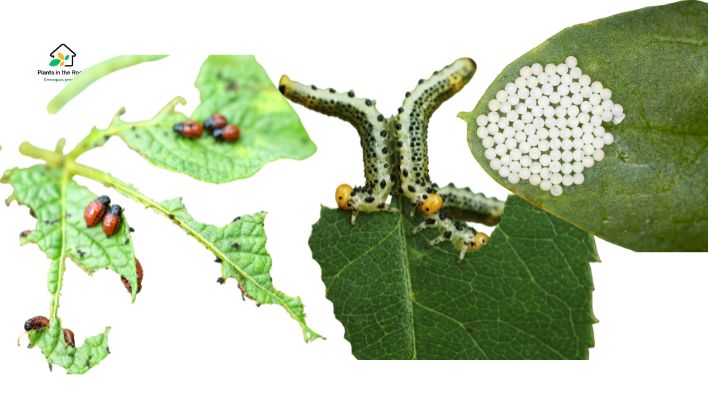
As with any houseplant, your asparagus fern may occasionally become a target for common pests. Effective pest control and prevention methods are essential to maintaining the health and appearance of your fern.
Common Pests Affecting Asparagus Ferns
Aphids and spider mites are two common pests that can infest your asparagus fern. These tiny insects can cause damage to your plant by feeding on its leaves and sucking out the sap. To identify an infestation, regularly check the leaves and stems of your fern for signs of pests, such as webbing, tiny insects, or sticky residue.
Environmentally Friendly Pest Control Methods
To tackle a pest infestation on your asparagus fern, consider using a gentle, eco-friendly solution. Mix water with a few drops of mild dish soap in a spray bottle, then spray the solution on the affected areas of your fern. The soapy water helps to suffocate the pests and remove them from the plant. After a few minutes, rinse the plant thoroughly with clean water to wash away the soap and dead pests.
This method is effective for both aphids and spider mites while being safe for your fern and the environment.
Tips for Preventing Pest Infestations
Preventing pests is much easier than dealing with an infestation. To minimize the chances of attracting pests to your asparagus fern, follow these simple tips:
- Keep your fern clean and free of debris, such as dead leaves or fallen flowers, which can attract pests.
- Ensure your plant is healthy and well cared for, as pests are more likely to target weak or stressed plants.
- Regularly inspect your fern for signs of pests and address any infestations early to prevent them from spreading to other plants in your home.
Troubleshooting Common Issues with Asparagus Ferns: Tips for Success
Like any houseplant, asparagus ferns can experience stress or illness, leading to a decline in their health and appearance. Learning to identify and address common issues is key to keeping your fern thriving. In this section, we’ll discuss the signs of stress or illness in asparagus ferns, and provide solutions for overcoming these challenges to ensure the continued health and beauty of your plant.
Identifying Signs of Stress or Illness
Asparagus ferns can exhibit various signs of stress or illness, such as yellowing or browning leaves, leaf drop, or stunted growth. When you notice these symptoms, closely monitor your fern to determine the cause. Some common issues include inadequate lighting, overwatering or underwatering, insufficient humidity, or nutrient deficiencies.
Other Common Problems and Solutions
To help your asparagus fern recover from stress or illness, consider the following solutions:
- Ensure your fern is getting enough light. If your plant isn’t receiving enough light, its leaves may yellow or drop off. Move your fern to a brighter location with indirect sunlight to improve its health.
- Overwatering can lead to root rot and yellowing leaves, while underwatering can cause leaves to turn brown and crispy. Adjust your watering schedule based on the moisture level of the soil, ensuring that it stays consistently moist but not waterlogged.
- Adjust humidity levels. If your fern’s leaves are turning brown at the tips, it may be due to low humidity. Increase humidity by using a humidifier, misting your plant, or placing it on a tray with pebbles and water.
- Fertilize properly. Nutrient deficiencies can cause various issues, such as yellowing leaves or stunted growth. Make sure you’re fertilizing your fern regularly with a balanced, diluted liquid fertilizer to provide the necessary nutrients for optimal growth.
By addressing these common issues and fine-tuning your care routine, you can help your asparagus fern recover and return to its vibrant, healthy state. Regularly monitoring your plant and promptly addressing any problems will ensure your fern remains a beautiful and thriving addition to your home.
In Conclusion
Proper asparagus fern care can be simple and rewarding with a little effort and attention. By choosing the right location, pot, and potting mix, and maintaining proper watering, fertilizing, pruning, and pest control practices, you’ll enjoy a thriving, healthy fern.
Embrace the journey of caring for your asparagus fern and watch it flourish under your attentive care.
Get to Know Your Asparagus Fern
| Indicator | Asparagus Fern |
|---|---|
| Family | Liliaceae |
| Genus | Asparagus |
| Species | A. densiflorus |
| Common Name | Asparagus Fern |
| Origin | South Africa |
| Plant Type | Perennial, Indoor Plant |
| Mature Size | 2-6 feet in height |
| Growth Rate | Moderate |
| Light Requirements | Bright, indirect light |
| Watering Requirements | Moderate, keep soil moist |
| Soil Preference | Well-draining, fertile soil |
| pH Preference | 6.0-6.5 (Slightly acidic) |
| Temperature Tolerance | 65-75°F (18-24°C) |
| Humidity Tolerance | Moderate to high humidity (40-50%) |
| Fertilization | Balanced liquid fertilizer every 4 weeks during growing season |
| Propagation | Stem cuttings, division |
| Pests | Aphids, spider mites |
| Diseases | Root rot, leaf spot |
| Toxicity | Non-toxic to humans and pets |
| Special Features | Air-purifying, attractive foliage |
| Popular Uses | Indoor houseplant, hanging baskets, containers |
Do you have any personal tips or experiences with asparagus fern care? Share your thoughts in the comments below!

